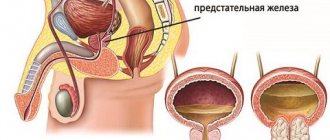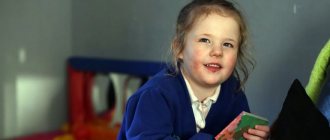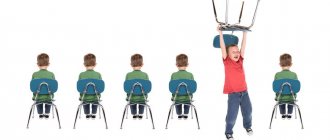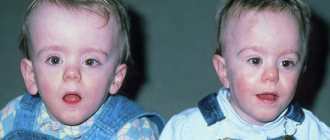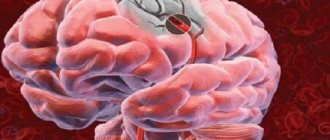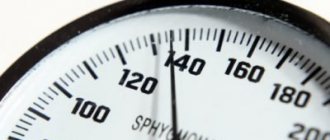Asperger's syndrome is a congenital condition that accompanies a person throughout his life. The opinion is actively expressed that this is not a disease, but a feature of the functioning of the brain. Over time, the manifestations of Asperger's syndrome change, some of its symptoms are smoothed out, while others become more pronounced. Unfortunately, most studies are conducted on a limited number of patients and cover a short period of time. Long-term programs could help to understand which adaptation programs for children with Asperger's syndrome are more effective. Alas, now doctors receive most of the information about the course of Asperger's syndrome from the stories of the Aspies themselves. Nevertheless, it was possible to identify some patterns.
Most studies confirm that people with Asperger's syndrome who had greater ability to plan and subsequently carry out complex tasks in childhood later adapted more easily to the social environment and were better able to understand others. The situation is similar in children who were treated by parents or psychologists from an early age. All studies confirm that most patients with Asperger's syndrome experience significant improvement in early school and adolescence, which for many is replaced by regression after leaving school. The general conclusion from most of these studies is that Asperger syndrome is less severe in adults than in childhood and adolescence.
Getting to know the disease
Asperger's syndrome is a mental disorder characterized primarily by problems of social adaptation and stereotypical behavior, but not accompanied by mental retardation and speech underdevelopment. In some cases, such patients, on the contrary, have a high intellectual level.
The syndrome was first heard of in the mid-20th century, when the Austrian psychiatrist and pediatrician Hans Asperger studied and described four children with problems with social interaction. They had difficulty establishing wordless contact with people, were emotionally stingy and incapable of empathizing with others, and also showed some clumsiness in their movements.
In addition, the symptoms of this disorder also manifested themselves in its discoverer.
The doctor designated the discovered syndrome as autistic psychopathy. He zealously and obsequiously defended his “findings,” saying that people with autistic psychopathy, having gone through great difficulties in childhood, occupy a certain cell in society and contribute to its development. The scientist believed that such patients have a special way of thinking and in the future can achieve significant heights.
In the 1990s, the disorder was given its modern name: Asperger's syndrome. The concept was identified as an independent diagnosis and its main criteria were formulated.
The International Classification of Diseases currently rejects this term. The disorder is coded as “Schizoid disorder of childhood.”
One of the theories of the occurrence of the disease is based on a hereditary factor. It is believed that if a child has sick relatives, especially the father, he has an increased risk of developing the disorder.
It is assumed that even in utero, under the influence of teratogenic, that is, destructive, factors, anomalies and developmental defects form in the fetus. They lead to pathological migration of embryonic cells, causing changes in the structure of the brain. The latter, in turn, disrupt the neural pathways responsible for thinking and behavior.
Toronto Alexithymia Scale
Determining the tendency to alexithymia is used for many conditions and diseases as a universal diagnostic test. Difficulty expressing one's feelings in words when necessary is one of the characteristic features of Asperger's syndrome. The alexithymia test was specially adapted by Russian psychiatrists from the V.M. Medical Institute. Bekhterev. It is a questionnaire consisting of 26 questions about various situations that require the expression of one’s emotions with answer options from “Strongly agree” to “Strongly disagree.” A score of up to 62 points is considered normal, from 63 to 73 – borderline, and more than 73 – obvious alexithymia. 80-90% of cases of Asperger syndrome are accompanied by severe alexithymia, so high survey results on the Toronto scale can be reliable confirmation of the presence of the syndrome.
Evolution of symptoms
Asperger syndrome in children manifests itself at an early age. The disorder is diagnosed more often in boys. The ratio of cases of the syndrome among boys and girls is 2:1.
Asperger's syndrome or, as it is also called, Alien syndrome is classified as an autism spectrum disorder. The disease is considered its most favorable and functional form and is often called high-functioning autism.
However, despite this, many Aspies, as they call themselves, are very offended when they are classified as autistic.
The disease begins to develop in infancy, but during this period it is quite difficult to diagnose. This is due to the fact that the disorder manifests itself through social communications, and they are not yet characteristic of this age.
Among the indirect manifestations of the disorder in infancy are:
- sleep problems – children have difficulty falling asleep and sleep restlessly. Their sleep is superficial and sensitive, they react to every sound and rustle. They sleep little at night;
- excessive calmness or, conversely, increased mobility;
- too capricious;
- picky eaters;
- delay in psychomotor development. The child slowly masters the main skills: walking, potty training, basic games.
Signs of the syndrome appear more clearly in early preschool age, when the child goes to kindergarten and begins to have more close contact with other children.
Here the baby’s behavior attracts attention. In a group or on a playground, you can observe a picture when all the children play together or in small groups, and one child is on the side, apart from the others. He does not show interest in other children, does not seek to get involved in their games and communication. It is difficult for such a child to interact with peers. Even joint activities with their parents are difficult for them.
Children with Asperger syndrome have poorly developed gestures and facial expressions. If most children over one year of age, in response to a welcoming wave of an adult’s hand, repeat this gesture after him, then this does not happen with little Aspies. It is difficult for them to establish eye-to-eye contact, their facial expressions are very poor. They are very sensitive to the touches of other people - other people's touches are unpleasant for them and cause negative emotions.
Aspie children have difficulty accepting the regime in kindergarten. Feeding them at a certain time or putting them to bed becomes a real problem. They let go of their parents with difficulty, cry and cling to them.
A girl with Asperger's syndrome, as an adult, remembers her stay in kindergarten as hellish torture. She sat in one place almost all the time or looked out the window. She had a hard time understanding the rules to follow and it irritated her. If someone touched her, it terrified her.
She did not understand the games of other children. What they laughed at did not evoke similar emotions in her. It was in kindergarten that she first felt like an alien. It seemed as if she had been dropped off on an unfamiliar planet with an alien culture, customs and traditions.
Treatment for Asperger's Syndrome
The main task of parents is to try to instill in their child social and communication skills . Learn to adapt and accept the variability of everyday life.
The main methods of treatment for Asperger's syndrome come down to psychological training and courses aimed at increasing people's adaptive qualities to society. Treatment takes place under constant supervision of a psychiatrist.
In addition to psychological treatment, patients are prescribed a course of medication consisting of sedatives. In some cases, taking antidepressants is appropriate. It is impossible to completely get rid of such a problem. But with proper therapy, a person with Aspie can be adapted by adjusting his perception of reality.
Then a person with Asperger syndrome will independently strive to overcome communication difficulties, trying to work with social problems on their own.
School age
Growing up, the Aspie child gradually grasps the meaning of children’s communication with each other and also strives to join this game. However, his social immaturity becomes an obstacle on this path. Therefore, the child establishes communication connections through imitation of the behavior of other children. And some people do it quite skillfully. And if the person being imitated is simply an object to be imitated, then everything turns out quite well.
The problem arises when the Aspie teen has a tendency to imitate the behavior of the “bad boy.”
Over time, children with Asperger's may not only improve their social skills, but also acquire negative characteristics. One of them is psychological defense in the form of anger or arrogance, which can subsequently develop into physical aggression. This reaction occurs in response to the persecution and bullying that some children with the syndrome are subjected to due to their atypical behavior.
In general, at an older age, such children manage to establish sincere, friendly relationships with their peers. But, given their categorical attitude towards friendship, the choice of comrades is subject to careful selection.
Typical signs
It is believed that the “favorite” age for the manifestation of the syndrome is 6 years and 2 months.
During this period, children are already actively developing speech, interests, social interactions, and attachments. Aspies are characterized by so-called social awkwardness. Their emotional poverty, inability to empathize, sympathize with other people, and inability to listen to their interlocutor causes difficulties in building relationships.
Adding to the difficulties is the inability to establish non-verbal contact, that is, with the help of facial expressions, body language and gestures. Therefore, such children find it difficult to establish contact with peers. There are two options here: either the child does not interact with other children at all, or one-sided communication is formed when the Aspie child expresses his thoughts to his interlocutor, talks about his interests, but does not listen to his friend at all, and does not allow him to get a word in. From the outside, such behavior looks like a manifestation of selfishness and insensitivity.
Sometimes such children are quite capable of starting acceptable conversations, but only with individuals who happen to be their favorites.
Speech in a child with Alien syndrome is formed on time and develops quite normally, in some cases exceeding its level in ordinary children. Such kids have a rich vocabulary with a literary touch, which is why their speech is called academic. In addition, many of them are quite talkative.
However, the speech is not without some shortcomings. Its intonation side often suffers; it can be too loud and harsh, fast, and screaming. The topics of conversation change suddenly, without semantic transitions.
There is a monologue, one-sided flow of words. That is, the child utters a long monologue without following it and without understanding whether it is interesting to the interlocutor. Sometimes this leads to the fact that the meaning of what was said is not conveyed to the listener.
Despite their rich speech, Aspie children are deprived of the ability to understand and perceive the abstractness of a statement. They do not perceive humor and irony. Even if they logically understand that it is funny, they do not experience the usual satisfaction and enjoyment of laughter and jokes. They perceive any text literally and are unable to “read between the lines” and see the hidden meaning.
The girl said that as a child she read many brochures with jokes and humorous stories, which she then told to her relatives. In this way she tried to understand what was funny to people.
Diagnostic criteria
The symptoms described above are common to most autism spectrum disorders. Various techniques used by specialists around the world help diagnose Asperger syndrome. The main criteria are presented in the table:
| No. | Name of the technique | Main criteria | Note |
| 1. | DSM-IV (Diagnostic and Statistical Manual of Mental Disorders) |
| Diagnosis requires the presence of at least two symptoms (sustained over time) |
| 2. | ICD-10 | Disorders relating to social interaction. Stereotyping in behavior, interests, action. Motor development may be impaired, but not always. | The development of a child up to 3 years corresponds to the norm (uttering single phrases up to 2 years, the presence of communicative phrases and self-service skills up to 3 years, etc.). The presence of clinical speech disorders allows us to exclude the diagnosis. |
| 3. | Gillberg's diagnosis (S. Gillberg, 1989, 1991) | At least two symptoms of social dysfunction:
Limited interest (at least one symptom must be present):
The desire to live according to a schedule:
Speech-related problems (minimum 3 out of 5):
Difficulties related to non-verbal communication:
Motor clumsiness. | To make a diagnosis, it is necessary to identify one or more manifestations from each group of symptoms. |
| 4. | Diagnosis of Szatmary (Szatmary, 1989) | Desire for loneliness:
Limited interaction with society:
Nonverbal communication disorder:
Difficulties with speech:
| To make a diagnosis, it is necessary to identify one or more manifestations from each group of symptoms. |
Diagnosing Asperger's syndrome is quite difficult; for this, a psychiatrist or psychotherapist must have certain experience and knowledge.
To make a diagnosis, it is necessary to carefully study the patient’s life history, analyze his behavior, and conduct a conversation with relatives and loved ones. The vast majority of symptoms fit the description of the character traits of an introvert, so experts use special medical tests to identify or exclude neurological disorders.
Cognitive and motor characteristics
There are no problems with intelligence in children with Asperger's syndrome. Usually it is age appropriate or even exceeds the age norm. Memory is quite well developed, but visual-spatial perception suffers.
A child with Asperger syndrome is distinguished by a narrow, specific focus of interests. A child can deeply study brands of vacuum cleaners or historical figures. He studies all the information on the issue that interests him and has super knowledge. Such interest becomes manic.
What does not arouse curiosity in a child is perceived with reluctance and is difficult to remember. In this case, the process must be strictly controlled.
Very often, despite a huge amount of knowledge, a child cannot apply it in essence.
Children with Asperger's syndrome are characterized by stereotypical behavior. This may include repetitive movements of the arms, head, or body. They are characterized by the development of certain rituals. Their violation knocks the child out of his usual rhythm and can lead to a nervous breakdown.
They are clumsy and poorly coordinated. They are often recognized by their shaky, unsteady gait. They have difficulty maintaining balance, making skills such as cycling or rollerblading difficult. While running, their body position is atypical; they are able to maintain an uncomfortable position for a long time.
Fine motor skills develop late. For example, Aspie children later learn basic tasks such as tying shoelaces or buttoning buttons. They also learn to write late; their handwriting is unclear and sloppy.
The behavior of children with Asperger's syndrome manifests itself in various phobias. But, along with this, they have a poorly developed instinct of self-preservation and a sense of danger.
RAADS-R scale
This is a more general test used to identify symptoms of autism in adults of normal intelligence. Its main feature is taking into account behavioral characteristics not only at the current moment, but also at the age of less than 16 years and a large number of scientific studies with this test. This helps eliminate the possibility of misdiagnosis for conditions such as obsessive-compulsive disorder, bipolar disorder, dysthymic disorder, anxiety disorder, post-traumatic disorder, depression, social phobia, anorexia, and schizophrenia.
The test includes 80 questions, the average score for healthy people is 32, and for people with autism – 134. Results above 65 points are considered alarming and require further clarification of the cause. The authors of the test recommend taking it at an appointment with a psychiatrist, arguing that online testing gives many false positive results.
